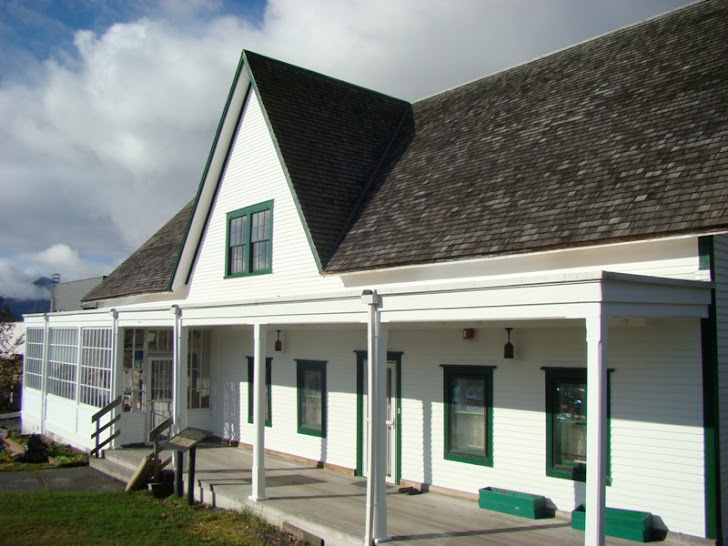 |
Half of a Kodiak bear, currently part of the Natural History exhibition at the Baranov Museum. |
What could half of a taxidermied Kodiak bear and an old room key possibly have in common?
 |
| Kodiak Hotel room key, a new addition to the museum collection. |
 |
| Promotional materials created by the Kodiak Guides Association to tempt hunters to Kodiak to land a trophy, likely from the 1940s. From the KHS archive. |
But I knew very little about the Kodiak Hotel. Time to hit the archives! I spent several hours digging around in the photo collection in order to discover more about the place. A few photos later and I had an answer: the Kodiak Hotel was the successor to the Sunbeam Hotel, which was owned by famed bear guide Charles Madsen.
Charles Madsen was a pioneer bear guide in Kodiak. He was the founder of the Kodiak Guides Association and was instrumental in promoting Kodiak as a hunters' paradise. He came up with the slogan "Kodiak, Home of the World's Largest Bear," putting Kodiak on the map due to his enthusiastic advertising of the island and his success in tracking our famed bears.
The bear pictured above was killed by Charles Madsen, and it first went to the Madsen's family living room. Judge Roy Madsen, Charles son, told the museum that the bear was too big to fit in the living room, so they cut it in half! Afterwards it was placed in Madsen's Totem Igloo Curio shop, a souvenir store attached to the Madsen-owned Sunbeam Hotel.
 |
| Comedian and actor Joe E. Brown poses with the half bear in the Madsen's store, 1942. KHS P 355-6-11 |
Today the bear is stationed in the natural history corner of the museum, but in truth that bear is one of Kodiak's most important ambassadors. Out of town guests would frequently pose to get their pictures with it. USO performers who came through town to entertain the thousands of troops stationed in Kodiak during WWII would have a snapshot taken next to it. This half of a bear with over sized teeth and a hairless nose from generations of petting can likely be found in old photo albums around the world. From being free in the wilds of Kodiak, to a mascot in the Totem Igloo, to a natural history specimen in the Baranov Museum, this bear has stories to tell.
Some time after WWII the Madsen family sold the Sunbeam Hotel, at which point the building became the Kodiak Hotel. The bear found a home in the Baranov Museum. Judging from the appearance of the hotel key, it is very likely that it was a key from the Sunbeam, as well. As a result, not only did this key unlock room 26 in the Kodiak Hotel, it helps to create a fuller story of the history of our local businesses as well as Kodiak Island hunting and bear guiding. At the Baranov Museum, what initially seem like completely distinct objects can be connected in surprising ways.
-Anjuli Grantham, Curator of Collections


